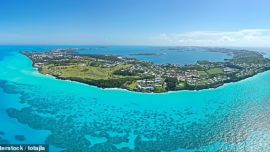The story goes like this: One person puts seven million pesos down on the table to buy a 4x4 truck that will be delivered in four or five months' time. At the same moment, another person stops buying a kilo of beef for dinner and turns to other options such as chicken or pork, in order to "fill the pot."
These are postcards from the same economy, Argentina’s economy, which this year will have an inflation floor of 70 percent. Some economists are already projecting higher, given the price hikes registered in the first four months of the year.
In recent months, the disparities in consumption between low-income and high-income sectors have widened. The reason is inflation: prices reached 58 percent year-on-year in April, and most are projected to clear 70 percent this year, according to economists such as Martín Redrado and Marina dal Poggetto.
According to data released by the Focus Market consultancy firm in April, mass consumption in local shops witnessed the biggest year-on-year percentage drop in the last 10 months, with a fall of 8.7 percent, producing a negative balance of 3.1 percent in the first four months of the year.
The firm’s chief, Damián Di Pace, also indicated that consumption in the Buenos Aires Metropolitan Area (AMBA) "fell more than in the interior of the country."
In this regard, he explains that, on average, a typical family requires about 42,500 pesos to afford a basic food basket, given the Precios Cuidados price-control scheme. Outside of these measures the value of that basket amounts to 45,000 pesos, but costing an additional 7,000 or 8,000 pesos in Buenos Aires City or in the first ring of the Conurbano.
"People's incomes are lagging behind the prices they receive on the shelves," said Di Piace, adding that the slump in consumption is occurring in all types of products. For example, that negative balance of 3.1 percent in the first four months of the year was made up of falls of 0.6 percent in beverages, one percent in cleaning products, 6.3 percent in food and 7.4 percent in personal care items.
Empty refrigerators and a waiting list for cars
With close to 40 percent of the population living below the poverty line, and another 40 percent making up a diffuse "middle class," high earners are still spending, especially on automobiles, tourism and leisure pursuits.
The delivery of a new car, after having put "all the money on the table", can take between four and five months, and this also pushes up the price of used cars, because they are available immediately.
The reason is simple. "People who can save do not want to do so with a peso that is devaluing at a rate of 70 percent a year compared to a fixed-term rate of less than 60% percent," explained sociologist Alberto Cuenca, of the Economía y Sociedad consultancy firm, in an interview with Perfil.
Such individuals "buy things that he or she can use and, what's more, that he or she can get today and maybe tomorrow they won't be on the market. This is not only seen in 'big ticket items,' such as a car, but also in the purchase of computers or notebooks that are in the shops today, but the sellers themselves don't know if they will have them again," said Cuenca
As for the boom in domestic tourism and packed theatres, they have other origins. According to theatre producer Carlos Rottemberg: "After the quarantine brought about by Covid, there was an explosion, a need to go out."
On the business side, "there are promotions of two tickets for the price of one, payment in three instalments... whatever is necessary to put the wheel in motion again," he adds.
To this can be added "the arrival of foreign tourists, especially Uruguayans, on weekends, beneficiaries of the exchange rate.”
One example is the Van Gogh Experience, the exhibition on the Dutch artist that was planned to run in December for two months, with tickets ranging from 2,000 pesos for children and up to 3,000 pesos for adults. Due to the success of the public, the show has been extended until mid-June.
In the case of tourism, the government’s Previaje plan that reimburses 50 percent of expenses incurred in the country, encouraged, together with the ‘Ahora 12’ instalment plan, trips to destinations further away from the Federal Capital and Greater Buenos Aires, such as Patagonia, Mendoza, Salta and Misiones.
"The equation is the same. You buy something now that is expensive, but in 12 months' time it will be cheaper,” concludes Cuenca.
related news
by Fabián Quintá, via Perfil




















Comments